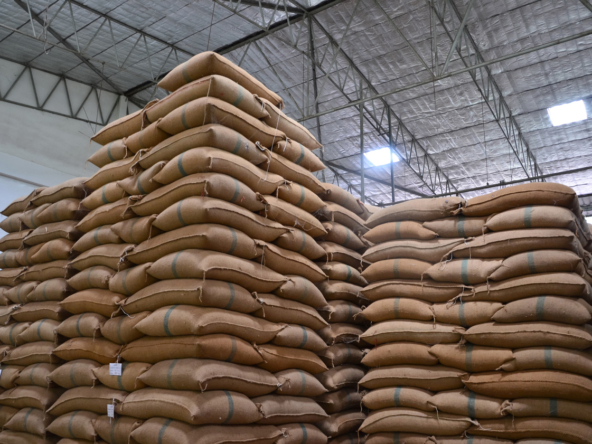The candy industry has continuously evolved, introducing new flavors, textures, and innovations to captivate consumers. One ingredient that has remained pivotal yet often overlooked is Arabic gum, also known as gum acacia. Renowned for its natural origin and versatile applications, Arabic gum plays a crucial role in enhancing the chewiness and stability of various candy products. This article delves into the significance of Arabic gum in the candy industry, its unique properties, and how it contributes to perfecting the texture and shelf life of candies.
What is Arabic Gum?
Arabic gum is a natural gum obtained from the hardened sap of two species of the acacia tree: Acacia senegal and Acacia seyal. Predominantly sourced from regions in Sudan and the Sahel, Arabic gum has been used for centuries in food, pharmaceuticals, and cosmetics due to its emulsifying and stabilizing properties.
The Chemistry Behind Arabic Gum
At a molecular level, Arabic gum is a complex polysaccharide composed mainly of arabinose, galactose, rhamnose, and glucuronic acid. Its high solubility in water and low viscosity make it an ideal ingredient for creating a smooth, consistent texture in candies. Arabic gum’s unique ability to form films and stabilize emulsions is essential in the manufacturing of chewy candies, providing a balance between softness and firmness.
The Role of Arabic Gum in Candy Production
- Enhancing Texture and Chewiness
- Soft Chews and Gummies: Arabic gum imparts a desirable chewy texture to candies like gummies and toffees. It provides elasticity and prevents brittleness, ensuring a satisfying mouthfeel.
- Stabilizing Air Bubbles: In products like marshmallows and nougat, Arabic gum helps stabilize air bubbles, contributing to a light and fluffy texture.
- Improving Stability and Shelf Life
- Moisture Retention: Arabic gum’s hygroscopic nature helps retain moisture, preventing candies from drying out or becoming too sticky.
- Preventing Sugar Crystallization: By inhibiting sugar crystallization, Arabic gum ensures a smooth texture and extends the shelf life of confectionery products.
Benefits of Using Arabic Gum in the Candy Industry
- Natural and Sustainable Arabic gum is a natural product, aligning with the growing consumer demand for clean-label and sustainable ingredients. Its harvest supports rural economies in Africa, particularly in Sudan, where it is a vital export commodity.
- Health Benefits
- Low Caloric Content: Arabic gum is low in calories, making it an attractive ingredient for health-conscious consumers.
- Dietary Fiber: As a source of soluble dietary fiber, Arabic gum can aid digestion and promote gut health.
- Versatility Arabic gum’s multifunctional properties allow it to be used in various candy formulations, from hard candies to soft chews and jellies. Its compatibility with other ingredients makes it a preferred choice for innovative candy creations.

Challenges in Using Arabic Gum
- Supply Chain Issues The dependence on specific geographical regions for sourcing Arabic gum can lead to supply chain disruptions due to political instability or environmental factors.
- Cost Implications High-quality Arabic gum can be expensive, influencing the overall cost of production. However, its benefits often justify the investment.
Innovations in Arabic Gum Applications
- Sugar-Free Candies With the rising demand for sugar-free products, Arabic gum is being used to improve the texture and stability of sugar-free candies, providing a satisfying alternative without compromising taste or mouthfeel.
- Functional Candies Arabic gum is increasingly used in functional candies that offer health benefits, such as vitamin-infused gummies or probiotics, due to its ability to encapsulate active ingredients and ensure their stability.
- Vegan and Allergen-Free Options Arabic gum serves as a perfect alternative to gelatin, making it suitable for vegan and allergen-free candy formulations, thus broadening the market appeal.
Case Studies
- Marshmallows: A leading confectionery brand reformulated its marshmallow recipe by incorporating Arabic gum, resulting in a product with improved texture and longer shelf life.
- Chewy Candies: A small candy manufacturer introduced a new line of chewy candies using Arabic gum, which received positive feedback for its enhanced chewiness and natural ingredient list.
Future Trends
- Sustainability As sustainability becomes a focal point in the food industry, the traceability and ethical sourcing of Arabic gum will gain prominence. Companies may invest in direct sourcing initiatives to ensure a stable supply chain and fair trade practices.
- Technological Advancements Research into the extraction and processing of Arabic gum could lead to improved functionalities, such as enhanced emulsification or targeted release properties, expanding its applications in the candy industry.
- Consumer Awareness Educating consumers about the benefits of Arabic gum can drive demand for candies that use this natural ingredient. Transparency in labeling and marketing can position products containing Arabic gum as premium and health-conscious options.
Conclusion
Arabic gum remains an indispensable ingredient in the candy industry, offering unparalleled benefits in texture enhancement, stability, and health appeal. Despite challenges in supply and cost, its natural origin and multifunctional properties make it a valuable addition to confectionery formulations. As the industry evolves, embracing innovations and sustainable practices around Arabic gum will ensure its continued relevance and success in perfecting the chewiness and stability of candy products.
Ajigofarms is a reliable global agricultural purchase sourcing with profound expertise in the manufacturing, and exportation of food crops. We are tested, and trusted suppliers of all kinds of cash crops and food crops. Our constant supply chain solution makes exporting easy, quick, and safe, we are identified with timeliness and meeting up with deadlines. Regardless of the region you are located in worldwide, you can reliably order your Agric products and be rest assured of successful delivery.




